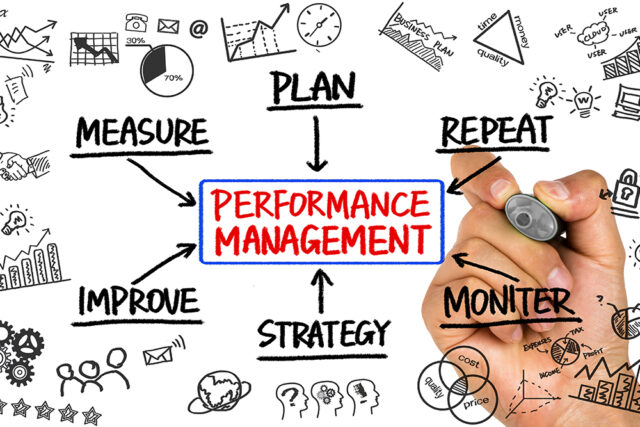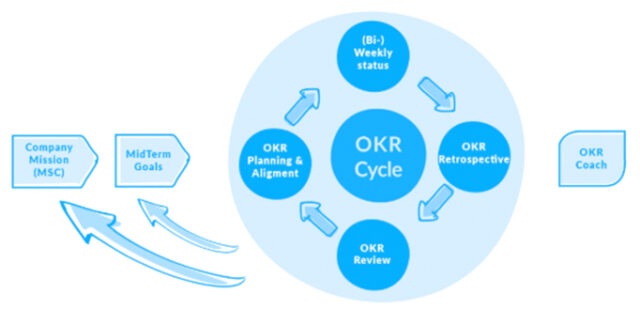Performance management regulation is a significant part of Human Resource. It is crucial to create a serene environment for all your workers for better productivity and excellent work.
However, having effective performance management goes beyond creating an excellent environment for your workforce. See this blog for everything you need to know regarding the effective performance management process.
What Is Performance Management?

Before learning the necessary steps to achieve effective performance management, you must first grasp the definition. Performance management is simply the activity involving processes that seek to improve and maintain high efficiency among employees in line with the organizational objectives.
In other words, the “what” and the “how” you do in managing employee efficiency will be critical in achieving the outcomes. Note that all the actions you take to achieve significant workforce productivity will depend on the organizational objectives and culture. There are different approaches for different organizations as one size does not fit at all.
Importance of Performance Management

It is worth noting that your employees’ output is a significant determinant of your company’s success. Therefore, if you enhance employee efficiency, you will subsequently improve team results and impact general productivity. Otherwise, the effect will be experienced across the board, and the company may not achieve its targets.
For this reason, HR should develop strategies that will enhance productivity among employees by creating realistic goals and effectively communicating them to every stakeholder for alignment. Most importantly, HR should provide support to all the employees and remain motivated throughout the working process.
This means that the company should be willing and ready to provide employees with the necessary training and development while providing all the required resources. After providing all these necessities, the company should let employees know that they are responsible for achieving their goals and enhancing efficiency.
Characteristics of Effective Performance Management

Advanced technology has led to an overhaul of productivity strategies in the modern world. As a result, traditional strategies have been replaced by modern approaches.
Before the technological breakthrough, many companies only relied on forced worker rankings and annual appraisals characterized by lower-ranking employees’ dismissals.
This management form created a sense of competition within an organization and discouraged collaboration as employees aimed to emerge the best. After some time, companies realized that these strategies were counterproductive and were disliked by managers and employees. Besides, the approaches were irrelevant to the business operation.
Today companies are finding it unnecessary to hold employees into account for goals set a year ago. It was hard for companies to make a prediction or plan for the future, as most of these appraisals only reflected past functionality. The critical aspects of adequate performance management include:
- Goals and standards to measure employee performance
- The objectives and performance are discussed across the board.
- Employee efficiency is tracked quarterly.
- Notably, the performance strategy you establish should be guided by simple, measurable, accurate, realistic, and time-bound objectives.
Common Obstacles to Effective Performance Management

Introducing a performance strategy may look simple, but it is easier said than done. The most important aspect is setting honest, constructive, and continuous feedback to support the strategy. As a manager, you will also need to train and support the employees by developing an effective conversation.
The most common challenges that you are likely to face when implementing an effective performance include:
- Identifying poor productivity
- Aligning individual and organizational goals
- Managing the high volume of feedback involved. Employees might find the feedback overwhelming, and others find it insufficient.
- Rewarding efficiency without rankings and ratings
- Mitigating risks of bias and discrimination.
These challenges show the need to carefully incorporate monitoring metrics in your performance management strategy to understand the required improvements. The strategy should also be changed when the business shifts in focus or experiences unexpected circumstances.
For instance, if your business incorporates new technology, the performance management system would be simplified throughout the board. Besides, if your company introduces a new product line, the objectives should incorporate the developments.
See This Blog For Top Performance Management Strategies.
Utilize OKRs Framework

The OKRs stands for objectives and key results. It is a methodology that prioritizes your organizational objectives by setting specific key results that provide the “how” to achieve your objectives.
OKRs break down the organizational objectives to the departmental, team, and employee level. In most cases, the key results are qualitative, showing the target and the time they ought to be attained. The strategy has proven successful for notable tech companies such as Amazon and Google.
Every employee is informed on the organizational objectives and what is expected of them by the end of a given time. From there, the employee makes their objectives followed by at least 3 key results in every objective.
The managers are part of this establishment and should ensure that the objectives are realistic and achievable within the given time. Besides, they should ensure that the objectives align with the organizational goals and lead to success.
Unlike appraisals, OKRs can be reviewed regularly to track their progress and make necessary improvements and changes.
Practice Preemptive Management

Ensure your employees understand what is expected of them and offer substantial rewards to those who perform exceptionally. This strategy ensures that employees do not guess the next step and know the consequences of their actions in the workplace.
Start by placing everyone on the same footing and provide a fairground for every stakeholder. Offering rewards to the performers show that you recognize employee efforts, and you are pleased with that. You will motivate others to perform better and encourage the performers to keep it up.
Preemptive management will help you support slipping employees by providing constructive feedback to avoid problems. Having effective performance management is critical for your business if you want to get the best out of your employees and remain competitive in the industry.
Therefore, you should incorporate the most effective strategies that align with your company’s culture and organizational objectives. Ensure you involve all the stakeholders and that the objectives are well understood and agreed upon.
Now if you are preparing for a management buyout? These five critical steps by Price Bailey to go through the process easily.







